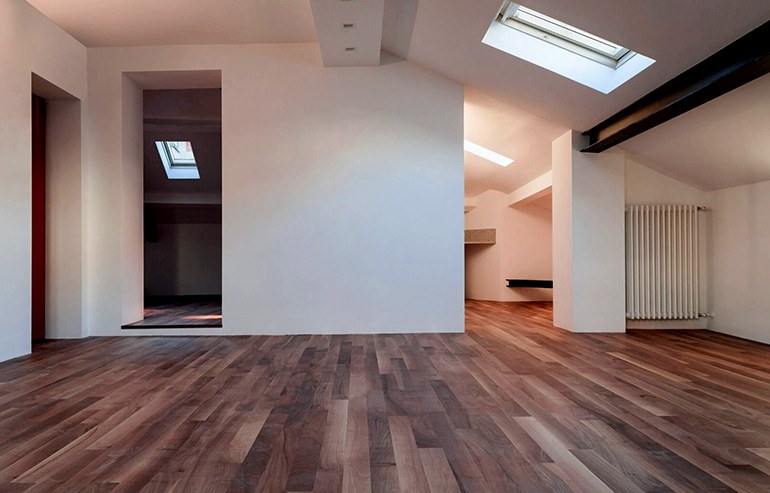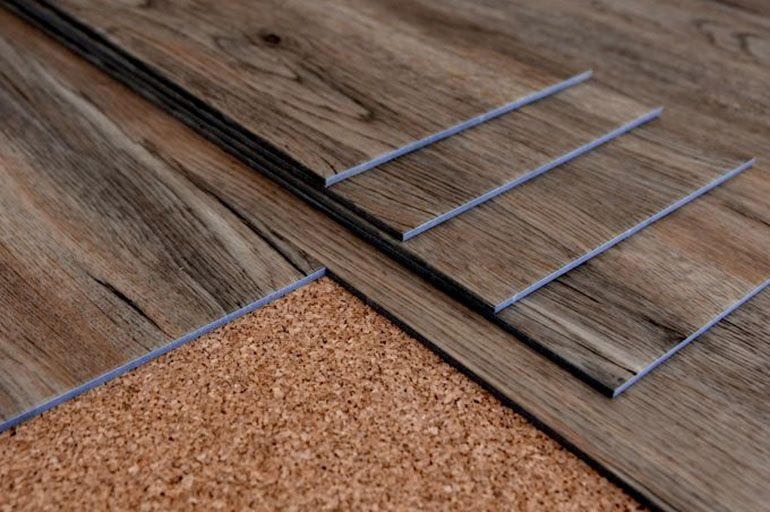
In the city of London and across the UK, floor renovations have become more than just a fleeting home improvement project. As of 2023, the home renovation market in the UK is valued at an astonishing £48 billion, with a significant chunk of this driven by floor renovations.
But why are floor renovations gaining so much traction?
Let’s take a deep dive into the top seven trends that are revolutionising the flooring industry.
1. Sustainable Flooring Options

In an era defined by an intensifying commitment to environmental conservation, sustainability has become more than just a buzzword.
It has evolved into a key factor influencing consumer choices in various sectors, and the flooring industry is no exception.
According to a 2023 report from Statista, a staggering 53% of UK homeowners are not just receptive but are actively willing to invest more in eco-friendly flooring options.
This growing preference for green alternatives signals a clear shift towards conscious consumption and an environmentally friendly approach to home renovations.
Among the most popular sustainable flooring materials are:
- Bamboo;
- Cork;
- Reclaimed wood;
- Etc.
Each of the above comes with a unique set of advantages.
Bamboo is revered for its rapid growth and regeneration capabilities, making it a highly renewable resource.
Cork is naturally resistant to mould, allergens and pests, thus reducing the need for chemical treatments.
Reclaimed wood, on the other hand, helps reduce deforestation by repurposing already felled timber, while simultaneously offering a distinctly charming aesthetic.
These materials are not only sustainable but also possess noteworthy durability.
They can withstand significant wear and tear, a trait that renders them ideal for high-traffic areas in homes. Moreover, they exude a natural, earthy vibe that can effortlessly enhance the warmth and character of any space.
The rise of sustainable flooring options embodies the fusion of ecological responsibility and innovative design.
This trend not only contributes to mitigating environmental impact but also offers homeowners a unique blend of aesthetic appeal and long-lasting durability.
As we strive towards creating homes that are more in harmony with our planet, the preference for sustainable flooring is poised to become a defining feature of the UK’s home renovation landscape.
2. Luxury Vinyl Tiles (LVT)

The term ‘vinyl’ might evoke images of the old-style, cheap, plastic-looking flooring of yesteryear, but don’t be fooled.
Luxury Vinyl Tiles (LVT) represent a new generation of vinyl flooring, redefining this category with its superior characteristics and aesthetic appeal.
This innovative flooring solution has been rapidly gaining popularity in the UK market, becoming a staple in many British homes.
What sets LVT apart is its tremendous versatility.
It offers a wide array of design options, closely mimicking natural materials like wood, stone, and ceramic, thereby providing the aesthetic appeal of these classic materials without their inherent drawbacks.
This means homeowners can achieve the luxurious look of hardwood or stone without worrying about high maintenance or susceptibility to water damage.
Durability is another crucial factor contributing to the growing popularity of LVT.
Designed to withstand high traffic and everyday wear and tear, LVT provides a long-lasting flooring solution that remains aesthetically pleasing over the years.
Furthermore, it provides a softer and warmer underfoot feel compared to traditional hard surfaces, enhancing the comfort level in homes.
Perhaps the most compelling feature of LVT is its affordability.
Despite offering luxury aesthetics and durability, LVT is surprisingly cost-effective, making it an attractive choice for homeowners seeking high-end appeal on a budget.
The combination of versatility, durability, and affordability has propelled LVT to the forefront of the UK flooring market.
The trend about LVT shows no sign of slowing down, cementing LVT’s place as a premier choice for modern flooring renovations.
3. Parquet Flooring: A Revival of Classic Elegance

In recent years, parquet flooring has staged a remarkable comeback in the hearts of homeowners across the United Kingdom, particularly in London.
This surge in popularity can be attributed to the growing desire among individuals for an interior aesthetic that combines both tradition and uniqueness.
Parquet flooring, with its distinctive and symmetrical geometric patterns, primarily the herringbone design, imparts a classic elegance to any room.
The intricate designs add character and depth, enhancing the overall ambiance of a space.
They provide an artful touch, a sense of luxury that is difficult to replicate with other flooring options.
The renewed interest in parquet is not merely anecdotal. Quantitative data supports this trend. A comprehensive report by Research and Markets revealed that parquet flooring experienced a significant increase in sales in the UK, specifically a 15% rise during 2022-2023.
This impressive statistic indicates the burgeoning appreciation for this age-old flooring tradition that adds a timeless charm to homes.
The report highlighted that homeowners aren’t just opting for traditional wood varieties like oak and walnut. Many are now exploring exotic wood types, such as teak and mahogany, for their parquet floors, bringing an extra layer of uniqueness and sophistication to their interiors.
The parquet flooring’s blend of tradition, elegance, and versatility makes it a top choice for those wishing to inject a sense of refined taste into their homes.
Its popularity surge testifies to its value as a timeless home upgrade. Whether you’re renovating a quaint Victorian house in London or a modern countryside home elsewhere in the UK, parquet flooring stands as a stylish option worthy of consideration.
4. Underfloor Heating

Underfloor heating, while not a novel concept, has certainly taken centre stage in the realm of floor renovations in recent years.
But what makes underfloor heating so appealing to homeowners?
There are three primary reasons:
- Energy efficiency;
- Space efficiency;
- Compatibility with various floor types.
First, let’s explore the energy efficiency factor.
Unlike traditional radiators which heat the air, underfloor heating directly heats the floor surface. This direct heating method results in a consistent temperature, eliminating cold spots and reducing energy wastage.
It’s a significant draw for environmentally-conscious homeowners, keen on reducing their carbon footprint while enjoying the comfort of warm floors.
In terms of space efficiency, underfloor heating eliminates the need for wall-mounted radiators, freeing up space for other design or functionality purposes. Especially in London’s compact living spaces, this efficient use of space is crucial.
Lastly, underfloor heating is an excellent match for a broad range of flooring types, including ceramic tiles, natural stone, and even wood.
Each of these materials is a conductor of heat, which means they work in synergy with underfloor heating systems to produce an even and comfortable heat distribution.
The combination of energy efficiency, space-saving features, and compatibility with different flooring options makes underfloor heating a popular choice among many UK homeowners. It provides a layer of luxury to any home, making the winters more manageable and the entire year more comfortable.
As underfloor heating technology continues to improve, offering more efficient and sustainable solutions, its popularity is set to increase even further, potentially reshaping the future of home renovations in the UK.
5. Natural Stone Tiles

There’s an undeniable allure to natural stone tiles that captures the heart of homeowners time and again. Their timeless charm and versatility offer an array of styles ranging from rustic to modern, traditional to eclectic.
Renowned for their strength, durability, and the unique flair they add to homes, natural stone tiles have been a staple in interior design for centuries.
Today, they are being appreciated anew, as people look for ways to incorporate natural elements into their homes.
Natural stone tiles are sourced from various types of stone, each with its distinctive characteristics.
From the elegant veins of marble to the rustic appearance of slate, from the warm tones of travertine to the polished finish of granite, the options are nearly limitless.
Different types of stone not only provide a myriad of design possibilities but also offer varying levels of durability and maintenance requirements.
One key reason for the growing popularity of natural stone tiles is their sophistication.
They bring a touch of luxury that few other materials can match. Whether it’s a marble-tiled bathroom that feels like a personal spa or a slate kitchen floor that combines beauty with practicality, stone tiles create spaces that are both striking and functional.
Importantly, the value of natural stone tiles goes beyond aesthetics.
These materials are known for their longevity.
When properly maintained, stone floors can last for decades, often outliving the house itself, which makes them a cost-effective choice in the long run, even though the upfront costs may be higher than other flooring options.
6. Bold Colours and Patterns
Modern homeowners are increasingly veering away from the neutral shades of yesteryears, instead opting for bold colours and dynamic patterns in their flooring choices. This audacious aesthetic shift has injected an unexpected vitality and personalisation into homes across the UK.
Brightly coloured ceramic tiles are leading the charge, providing a palette of colours and designs limited only by the homeowner’s imagination.
From zesty oranges to deep blues, these tiles can infuse rooms with personality and flair. Mosaics and geometric designs are particularly popular, providing an artistic touch to kitchens and bathrooms alike.
Likewise, patterned Luxury Vinyl Tiles, known as LVT are emerging as a bold and affordable flooring trend.
This burgeoning trend of bold colours and patterns is not merely about making a statement.
It’s also about creating a home environment that reflects the homeowner’s personality and taste.
According to a recent, a notable 41% of homeowners who undertook flooring renovations in 2022 elected to go bold, incorporating vibrant colours and standout patterns into their design.
This trend is pushing boundaries and disrupting the monotony of traditional flooring.
It empowers homeowners to break away from the crowd, expressing their unique style through the rich language of colour and pattern. As we move further into 2023, we can only expect this trend to grow, revolutionising the face of modern home flooring across the UK.
7. Smart Flooring
With technological advancements seeping into every aspect of our lives, our homes are not immune to this transformation.
The seventh trend, smart flooring, is a trailblazing innovation that’s starting to make its mark in the flooring industry.
What exactly is smart flooring, you ask?
Imagine a floor that generates electricity simply by being walked on, or a floor that tracks your movements, providing key insights for those with health concerns or for elderly care.
It sounds like something out of a science fiction novel, doesn’t it?
However, this is the reality of smart flooring.
Innovations like energy-producing floors utilise a process known as piezoelectricity, where pressure applied to the flooring material generates electricity.
This electricity can be used for low-power applications, effectively contributing to energy efficiency within a home or commercial setting.
Similarly, floors that track movements are becoming integral to healthcare. Such floors use sensors to monitor walking patterns, providing valuable data that can help predict falls or other health concerns, particularly in elderly care.
The potential of smart flooring extends to other areas too, such as interactive retail experiences or enhanced security measures, thus making it a versatile solution for various industries.
In the heart of London and across the UK, homeowners and businesses who are forward-thinking and tech-savvy are beginning to embrace smart flooring, aligning their spaces with the future of home and commercial environments.
It is a trend that we, at Resand.co.uk, are watching closely, with a keen interest in how it develops over the coming years.
Stay on Trend with Your Flooring Renovations
The impact of these flooring renovation trends is undeniable.
They reflect a dynamic shift in home improvement strategies, focusing not just on visual appeal, but also on environmental sustainability, enhanced functionality, and cutting-edge technology.
UK Homeowners Embrace Change
UK homeowners are readily embracing these trends.
They’re renovating their floors to ensure their homes aren’t just visually pleasing but also embody the latest advancements and standards in the flooring industry.
Get professional assistance with your flooring needs
Undertaking a flooring renovation is a significant decision. Whether it’s a straightforward sanding and polishing job or a complete flooring transformation, it’s crucial to get it right.
At Resand.co.uk, our team of experts stay abreast of the latest trends in the industry, providing top-notch, informed services that align with modern homeowner needs.
Ready to give your flooring the upgrade it deserves? Contact us today!
Our team is on hand to provide more information, discuss your options, and help bring your flooring visions to life.
Join the ranks of homeowners revolutionising their homes through innovative flooring solutions.
Let’s create a floor you’ll be proud to stand on!

Lily Edwards is a dedicated blog author for ReSand.co.uk, using her background in Interior Design to write insightful articles on floor care, including sanding, oiling, and polishing.
When she's not crafting informative blog posts, Lily enjoys exploring the British countryside, antique hunting, and indulging her love for DIY home improvement projects.
